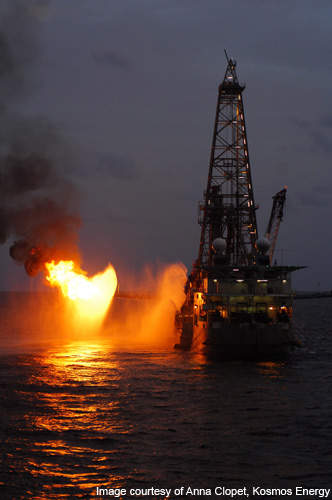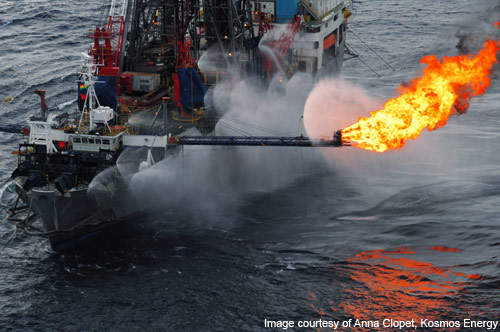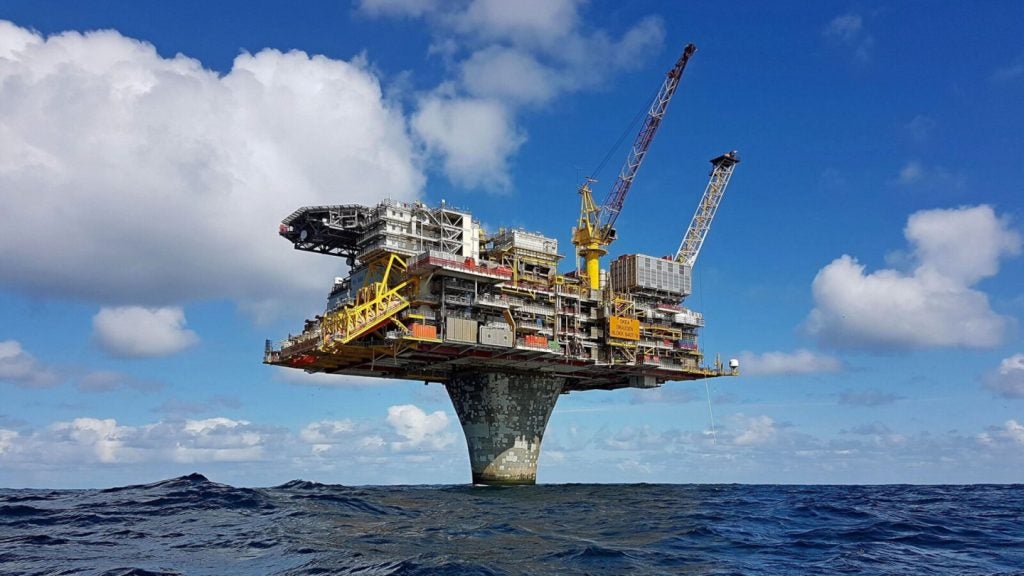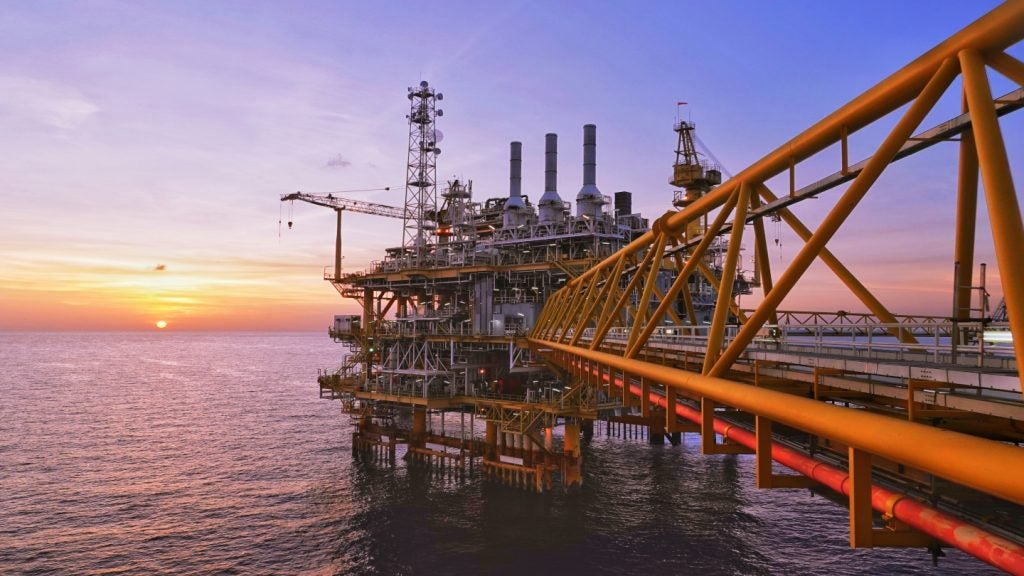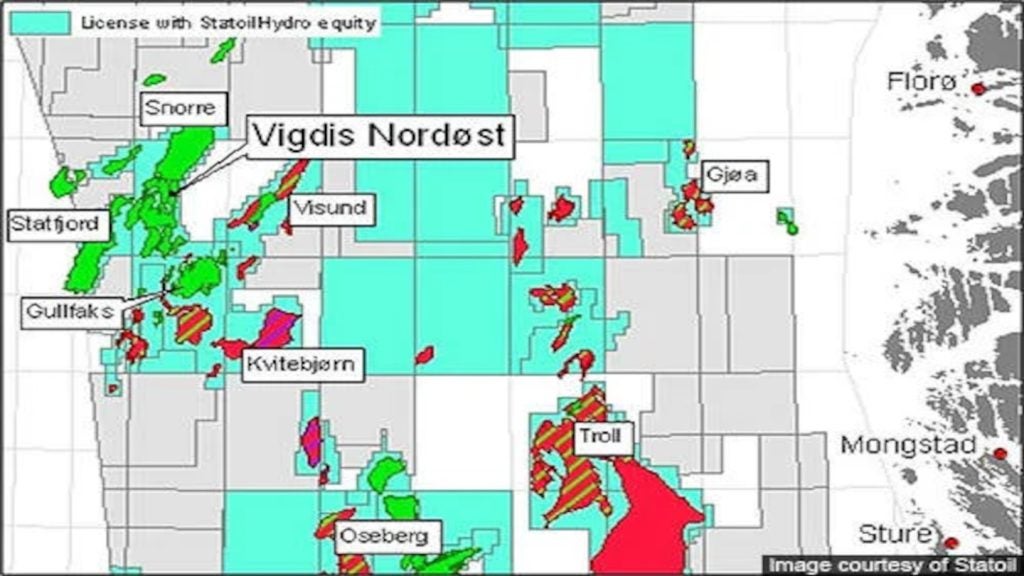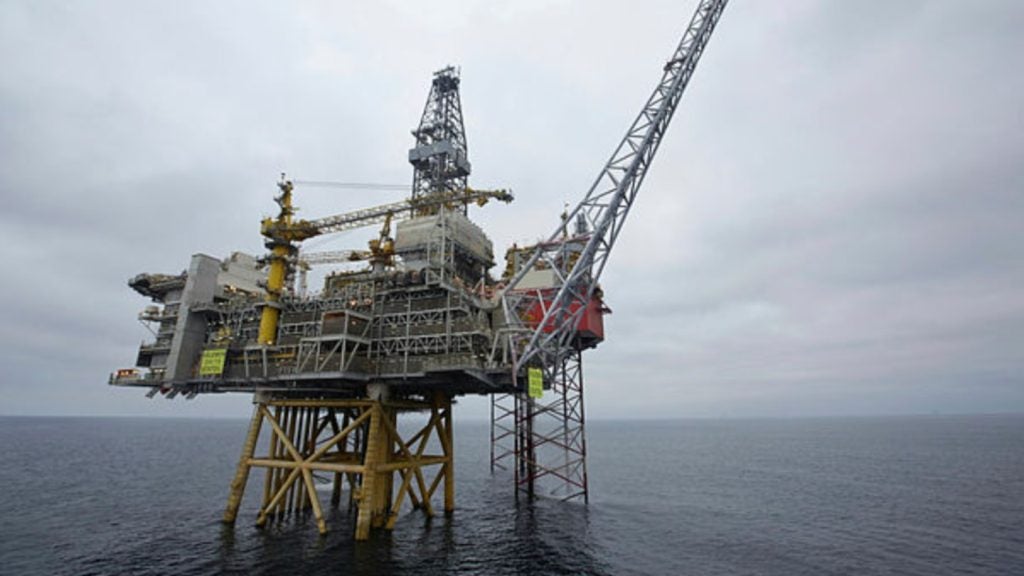The Jubilee field was discovered in June 2007. It is located 60km offshore between the Deepwater Tano and West Cape Three Points blocks in Ghana.
The field’s recoverable reserves are estimated to be more than 370 million barrels, with an upside potential of 1.8 billion barrels. It is located at a water depth of 1,100m.
Equity partners of the Deepwater Tano block are Tullow with 49.95%, Kosmos with 18%, Anadarko with 18%, Sabre Oil & Gas with 4.05%, and Ghana National Petroleum Corporation (GNPC) with 10%.
West Cape Three Points is held by Tullow with 22.9%, Kosmos with 30.88%, Anadarko with 30.88%, Sabre Oil & Gas with 1.85%, Ghana National Petroleum (GNPC) with 10%, and EO Group with 3.5%.
The Jubilee appraisal and development programme began at the end of 2008 and the Odum, Mahogany-2, Heydua-2 and Mahogany-3 wells were drilled.
Parallel to the appraisal drilling programme, phase I development of the core field has progressed at a rapid pace since July 2008. The field delivered first oil in December 2010. By May 2011, the field was producing 70,00bopd from five wells.
Jubilee FPSO
In October 2008, MODEC was awarded the engineering, procurement and construction contract to provide a floating, production, storage and offloading (FPSO) vessel for the Jubilee field. MODEC is responsible for the operation and maintenance of the FPSO.
The tanker vessel Ohdoh was converted for the Jubilee field and christened FPSO Kwame Nkrumah MV21. The conversion process was completed in May 2010 at the Jurong Shipyard in Singapore. It included the installation of a water treatment plant, turret and a 120-room accommodation module. A crude separation plant, gas processing unit and a power generation plant were also installed.
The turret-moored FPSO was towed to its location in the Jubilee field in June 2010. At the field the FPSO is linked to various production wells.
The FPSO was installed in November 2010, at a water depth of 1,100m. It is designed to operate for 20 years. The facility processes 120,000bpod and 160mcf per day of gas, and has a storage capacity of 1.6 million barrels of oil. It injects more than 230,000 barrels of water a day.
Jubilee discovery
In 2007, the Mahogany-1 well discovered the Jubilee oilfield. This provided potential gas cap resources in the Mahogany-2 location.
Exploration found no gas cap at this location indicating further deep drilling. During the same year the Hyedua-1 appraisal well confirmed that Jubilee was a world-class sweet oilfield.
Jubilee field development
The Blackford Dolphin and Eirik Raude rigs are conducting development drilling activities on the Jubilee field. The Attwood Hunter rig arrived in March 2009 and is being used exclusively for exploration and appraisal activities. It will later be used for drilling two development wells. Another rig, Aban Abraham, arrived at the filed at the end of 2009.
The Odum well in the West Cape Three Projects block was drilled in February 2008.
In June 2008, Mahogany-2, the first appraisal well, was drilled to a depth of 3,443m in a water depth of 1,080m by Songa Saturn drillship. The results proved that the Jubilee field’s turonian turbidite reservoirs were highly productive, validating its geological and reservoir model.
Before declaring this field as a potential development well, the oil samples were collected for conducting comprehensive refinery assays. The drilling was conducted by Blackford Dolphin.
In July 2008 the results of a second successful flow test on the Mahogany-2 appraisal well were declared. A 23m perforated interval took over this test, flowing at a rate of 4,448bopd of 39ڠAPI oil and approximately 5.1mscfd of associated natural gas on a 36in/64in choke.
Both tests provided data about additional reservoirs in the field.
In December 2008 Hyedua-2, the second appraisal well in the Deepwater Tano licence, was also drilled. As a result, a gross reservoir interval of 120m containing about 55m of high-quality oil bearing reservoir sandstones was discovered. It was drilled by the Blackford Dolphin semi-submersible to a depth of 3,663m at a water depth of 1,246m.
The Mahogany-2 and Hyedua-2 wells confirmed that the Jubilee field is highly productive and well connected. After configuration and when on stream for production, these wells would be capable to produce more than 20,000bopd with 5.5in tubing.
In January 2009 the Mahogany-3 well was drilled and an additional and extensive sand known as Mahogany Deep was discovered.
In October 2009 the Mahogany-4 well was drilled towards the east of the Jubilee field. The well was drilled to a depth of 3,680m and encountered 15m of net pay.
In December 2009 the Mahogany Deep-2 well was drilled 3km from Mahogany-3 and encountered 12m of net pay. The Odum-2 well was also drilled in December 2009 and encountered hydrocarbons.
Phase I development plan
In July 2009 the Energy Ministry of Ghana approved the Jubilee Phase I Development Plan and Unitisation Agreement. Under this plan the Jubilee field was developed through an FPSO, delivering a plateau oil rate of 120,000bopd, water injection capacity of 230,000bwpd, and gas export and injection capacity of up to 160mscfd.
The work began in July 2009 and the delivery of first oil was in December 2010. Four rigs were secured for commencing the drilling activities.
Jubilee phase IA project is at the planning stage and the development plan is likely to be submitted to the Government of Ghana in 2012.
Jubilee field contracts
Technip was awarded two contracts for engineering and fabrication of a total of 27km of risers and 48km of flowlines, 26km of umbillicals and other equipment. The company has also installed and tested the subsea equipment. Technip subcontracted UTEC to provide survey and positioning services for the field.
Subsea 7 was awarded a $20m contract to provide a remote operating vehicle (ROV) system for the Jubilee FPSO. Under the contract i-Tech, a subsidiary of Subsea 7, supplied a 150hp Centurion QX work-class ROV system for the FPSO.
In March 2010, Weatherford Pipeline & Specialty Services group won the contract for pigging of different flowlines at the field. The company also carried out testing of the flowlines, riser and jumpers and dewatering of the gas injection system.

